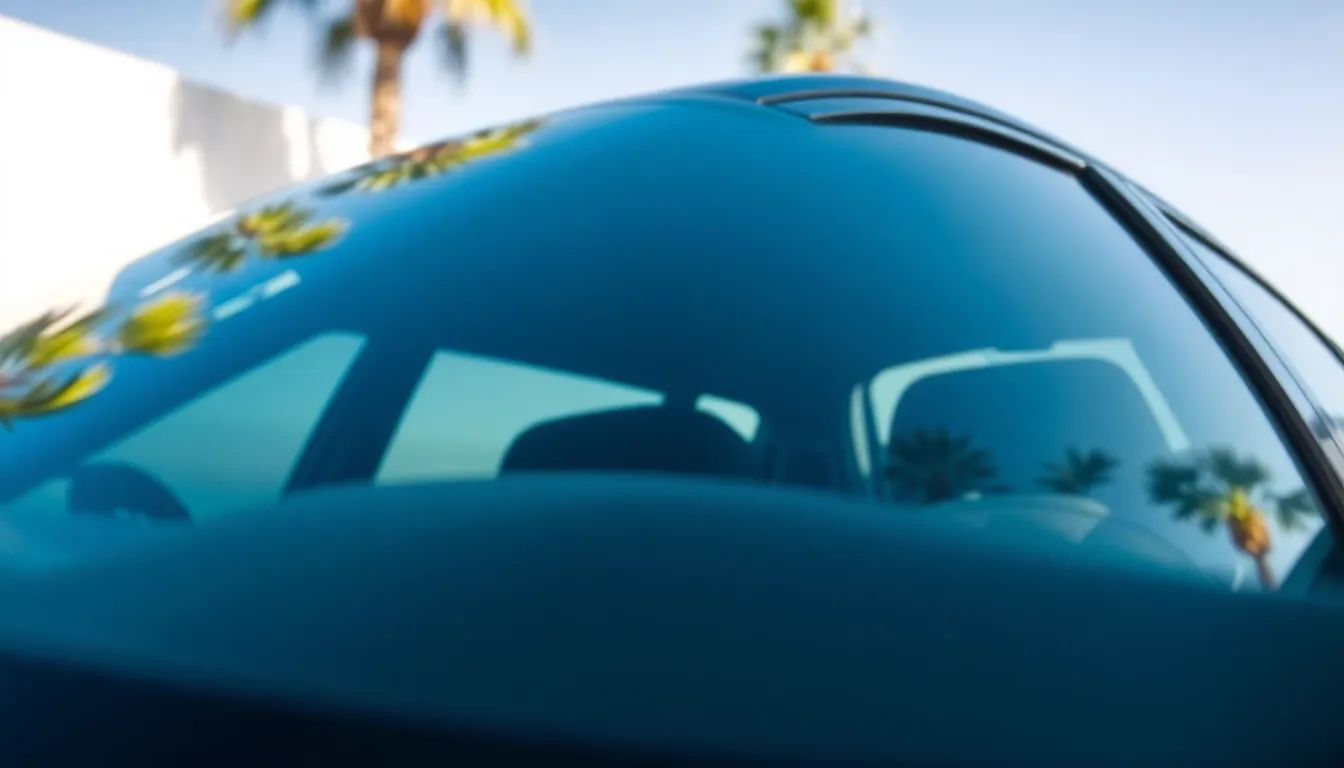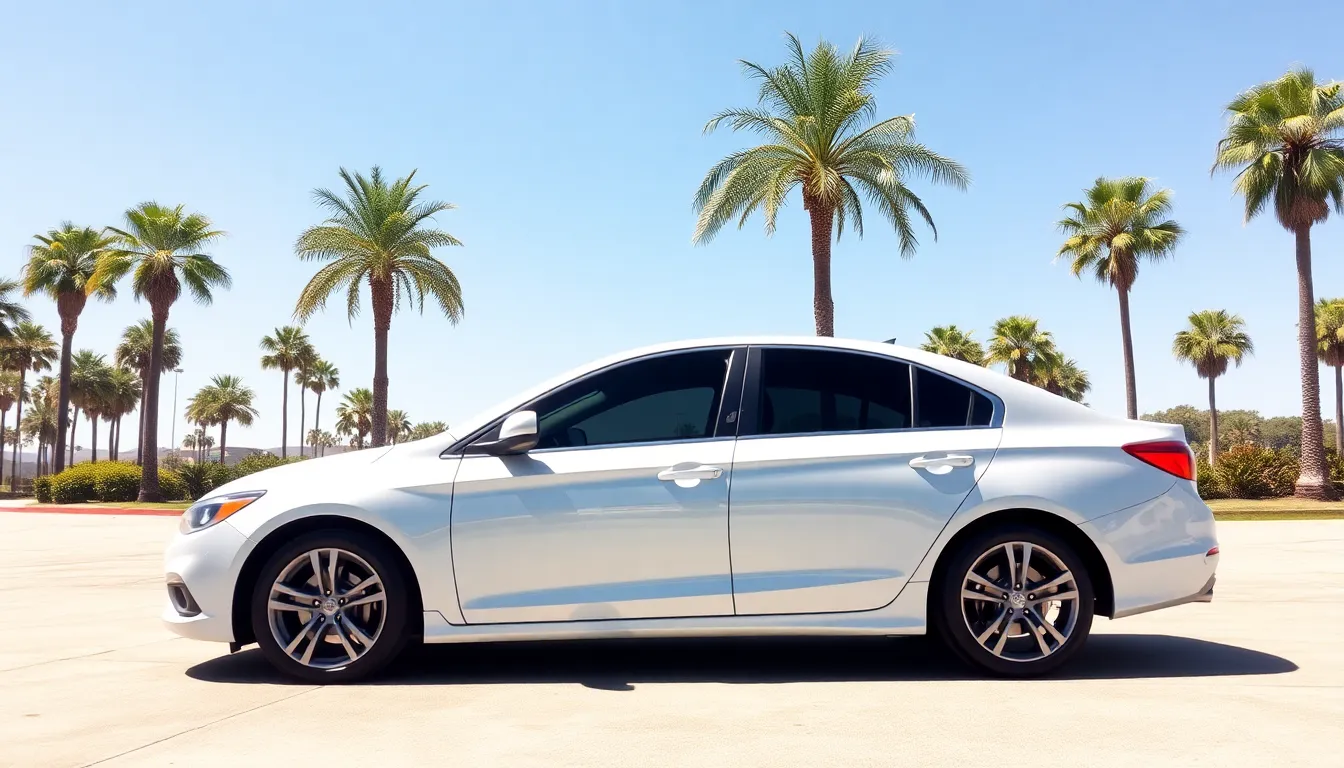Table of Contents
ToggleIn the land of sunshine and palm trees, where everyone’s trying to look cool while avoiding sunburn, the question of window tint legality often comes up. Is 30% tint legal in California? It’s a hot topic, and not just because of the blazing sun. With the right tint, one can feel like a celebrity cruising down the Pacific Coast Highway, but getting pulled over for a tint violation can quickly turn that dream into a nightmare.
Understanding Window Tint Laws in California
California’s window tint laws aim to balance driver comfort with safety. Tint percentages vary based on vehicle types, emphasizing specific regulations.
Overview of Tint Laws
California permits up to 70% visible light transmission for front windows on passenger vehicles. For rear windows, the law allows any tint darkness. However, SUVs and vans can have tint darker than 30% on front windows. Law enforcement may perform tests to verify compliance. Non-compliance can result in fines and required removal of illegal tint. Understanding these specifications helps drivers stay informed and compliant.
Importance of Compliance
Compliance with tint regulations promotes safety for all road users. Law enforcement relies on clear visibility through vehicle windows for accurate assessments. Additionally, non-compliance can lead to legal issues, including citations and potential vehicle registrations being affected. Following the law protects drivers and passengers from harmful glare and UV rays. Educating oneself on these regulations ensures a smoother driving experience without the hassles of violations.
Legal Limits for Window Tinting

California has specific regulations regarding window tinting that aim to ensure safety while providing comfort. Understanding these laws is crucial for drivers.
Front Windshield Regulations
The front windshield can only have a tint that allows at least 70% of visible light transmission. A strip along the top edge, known as an AS-1 line, can have a darker tint. Non-compliance with this regulation can lead to fines and require immediate removal of illegal tint. Enforcement officers may conduct tests to check compliance, so it’s essential to adhere to these limits.
Side and Rear Window Regulations
For side windows, tint darkness varies based on vehicle type. Passenger vehicles may have a tint of any darkness on rear windows, while front side windows must also allow at least 70% visible light. SUVs and vans enjoy more lenient regulations, permitting window tints darker than 30% on front side windows. Awareness of these distinctions helps drivers make informed choices about their window tinting.
Is 30% Tint Legal in California?
In California, 30% tint is subject to specific regulations that determine its legality based on vehicle type and window placement. Understanding these details helps drivers comply with the law while enjoying the benefits of window tinting.
Definition of 30% Tint
A 30% tint allows 30% of visible light to pass through the windows, significantly darkening the appearance. Typically, this level of tint is popular among those looking to enhance vehicle aesthetics and reduce glare. In California, the laws specify visible light transmission percentages for different vehicles and windows, creating clarity about tint legality.
Conditions for Acceptable Tint Levels
California restricts front window tinting for passenger vehicles to a minimum of 70% visible light transmission. This regulation applies to the front side windows and front windshield, ensuring drivers maintain clear visibility. For rear windows, any darkness is permissible, allowing more freedom for customization. In contrast, SUVs and vans enjoy slightly lenient rules, permitting darker tints on front side windows. Compliance with these conditions is crucial to avoid fines and the necessity of removing non-compliant tints.
Consequences of Non-Compliance
Non-compliance with California’s window tint laws carries various penalties. Understanding these consequences is essential for vehicle owners to avoid legal issues.
Fines and Penalties
Fines for violating window tint regulations can vary significantly. First-offense fines typically range from $25 to $200. Repeated violations can lead to larger penalties, potentially exceeding $1,000 for multiple offenses. In addition to fines, authorities might mandate the removal of illegal tint. Ignoring these laws can escalate issues, with law enforcement enforcing citations that impact driving records.
Vehicle Inspections
Vehicle inspections are a crucial part of ensuring compliance with tint laws. During routine stops, law enforcement officers may conduct visual inspections of window tints. If a vehicle’s tint is suspected of being too dark, officers can use light transmittance meters for testing. Results showing tint opacity below the legal limit will lead to repercussions, including citations and fines. Regular checks on vehicle compliance help maintain safety standards on the road.
Understanding California’s window tint laws is crucial for anyone considering a 30% tint. While it may enhance aesthetics and comfort, the legal implications of non-compliance can be significant. Drivers must ensure they adhere to the regulations regarding visible light transmission for front windows to avoid fines and potential removal of illegal tint.
For passenger vehicles the strict limits on front side windows mean that a 30% tint isn’t legal. However SUVs and vans enjoy more lenient rules. Staying informed about these laws helps maintain safety on the roads while enjoying the benefits of window tinting.




